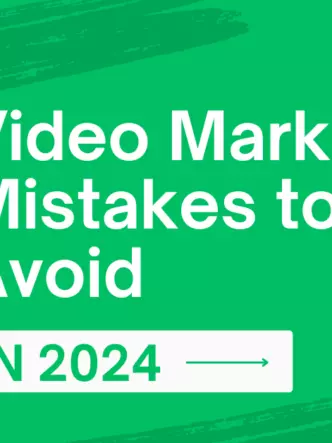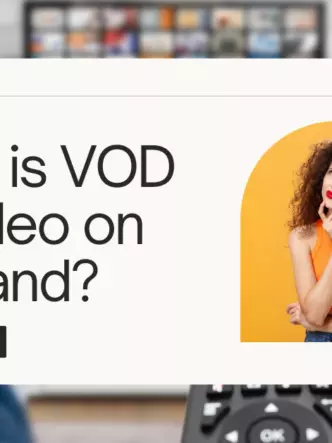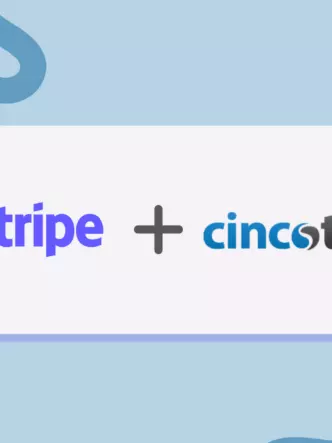Live streaming is becoming increasingly important across the social and business landscape.
The upward trend is visible along nearly every demographic, but it is especially significant among young people.
More than half of 18- to 49-year-olds don’t watch TV anymore. Instead, they are turning to live content broadcast directly into their desktops and mobile devices.
Live content is not only important for B2C businesses, like retailers, restaurants, and home service providers. It is also a crucial tool for B2B professionals looking to connect with business owners.
Live streaming success depends on finding the right platform for your content. Choosing the right way to broadcast your live content is critical to building (and engaging with) your audience.

What you’ll need to get started live streaming
For most people, learning how to start live streaming is much easier than building a professional-looking video presence online. The production standards for pre-recorded video are typically high. Live streamers can enjoy resounding success with a simple DIY aesthetic. The spontaneous nature of live content makes it more affordable and quicker to produce.
Most live streamers create live content using one of the following configurations:
- Their mobile device: The most simple way to live stream is straight through your phone. This is great for capturing spur-of-the-moment content on topical events as they happen. However, streaming solely from your mobile phone comes with obvious limitations.
- Their web browser, using extensions: Web browser streaming allows content creators to share their screen with audiences. The versatility and simplicity of this option makes it popular for software developers, gamers, marketers, and more.
- A camera connected to a software encoder: Some professional streaming software applications can encode an incoming camera feed for live streaming in real-time. This allows streamers to use multiple camera angles, add overlays, and use titles in creative ways.
- Multiple cameras connected to a hardware encoder: Hardware encoders are physical devices that act as an interface between multiple audio/visual inputs and your computer. These devices support a wide range of cameras, microphones, and more, making them ideal for high-stakes events that demand top-quality production value.
Of course, creating content is just the first step towards live streaming success. You also have to broadcast your content effectively. Once you’ve gathered an audience, you may also wish to start monetizing your content, capturing analytics data from your viewers, and generating leads for your business.

Video hosting platforms vs. social media networks:
You’ll often find terms like “video hosts” and “social media” used interchangeably. This is because many of the world’s biggest social media networks also host videos and live streamed content.
Before jumping into the different video hosting and social media platforms out there, we need to distinguish between the two terms:
- Social media networks are tools used by a community of people to find and communicate with each other.
- Video hosting platforms are technical providers whose servers make content available to users.
So YouTube is both a social media network and an exclusive video hosting platform. You can’t upload a video somewhere else and then link it directly to YouTube. Instead, you have to upload directly to YouTube.
Facebook, on the other hand, is a social media network that offers integrated video hosting as an option. You can upload videos directly to Facebook, or you can post a link to one hosted elsewhere.
However, when it comes to live streaming, the vast majority of social media platforms demand exclusivity from their users. They make it difficult for a single user to broadcast a single live stream, for example, to YouTube and Facebook at the same time. Third-party video hosting solutions and multi-streaming tools can solve this problem. Streaming to multiple channels at the same time is an important value-add for many businesses in both the B2B and B2C fields.
What about Vimeo?
Vimeo is the world’s largest ad-free video platform. If you want to stream content to users without distracting them with advertisements, Vimeo’s platform can do the job. It even offers limited multi-streaming functionality and password protection on video content.
Vimeo’s stance on advertising comes with costs. The company has largely decided to pass those costs onto its content creators, who must pay for a Business Live plan before streaming content on their platform. If you want advanced analytics, you have to go one level higher and buy Vimeo’s premium PRO membership.

Best social media networks for live streaming
Now that we know that you don’t have to limit your streaming efforts to a single channel at a time, we can identify the advantages and drawbacks that each platform offers.
1. Facebook
As the world’s largest social media network, streaming on Facebook is likely to carry some significant benefits. If you already have an audience on the platform, streaming live content to them is a natural extension of your existing content strategy.
Facebook Live content is not indexable. This means that users can’t find your content with a Google Search.
In fact, finding older posts of any kind is time-consuming and difficult. While Facebook offers a wide reach, its analytics and audience segmentation offerings are sub-standard at best.
Fortunately, Facebook doesn’t require its users to use its native video hosting solution. You can (and should) use an analytics-oriented video hosting platform along with Facebook.

How to start live streaming on Facebook:
- Navigate to your Facebook homepage (i.e. the News Feed) and click on camcorder icon (‘Live Video’ button).
- Add a description of what you’ll be talking about during your live stream.
- Feel free to adjust or add lenses and filters if you’d like.
- When you’re all set, click on “Start Live Video”…and, you’re live!
2. YouTube
YouTube has a reach almost as large as Facebook’s, and offers greater searchability. However, carving out your niche on YouTube can be incredibly difficult unless you already have an existing audience to broadcast to.
YouTube comes with major drawbacks, as well.
First off, live content creators have to give up control of their content. YouTube can decide to use your materials for its own advertising. Secondly, YouTube forces all users to use it as their video host. This means you’re stuck with whatever usage analytics YouTube wants to share with you – which isn’t much.
It’s important to note that if you want to live stream via mobile using YouTube, your YouTube channel must have at least 1000 subscribers.

How to start live streaming on YouTube ON DESKTOP:
- Navigate to YouTube Creator Studios (i.e. the Live feature). You’ll have to do this more than 24 hours before you plan on live streaming.
- At the far right-hand corner of the page you’ll see a cam-recorder icon. Click on it.
- You’ll want to select Webcam
- Add a jazzy title and description. Here’s where you can schedule the live stream for a later date.
- Push the ‘Save’ button and create a funky thumbnail
- Click ‘Go Live’ and you’re….Live!
How to start live streaming on YouTube VIA MOBILE:
- Navigate to your YouTube app and click on the cam-recorder icon.
- Enable microphone and camera access (if these are applicable).
- Click on ‘GO LIVE’ at the top right of your screen.
- Add a cool title.
- Click on ‘Next’. Here’s where you can either pose for a cool thumbnail or upload an image of your choosing.
- Click on ‘Share’ to enable your fans to join.
- Click on ‘Go Live’ and knock ’em dead!
3. Instagram
Instagram can play a unique role as a visual marketing channel for your brand. More than 25 million companies use Instagram for business to reach out to their audience. While Instagram tends towards B2C, it also serves a growing niche of B2B content creators as well.
Instagram has one of the highest engagement ratios of any social media platform. This can make it a powerful asset for live streaming, but only in a very specific way.
The Instagram community is lifestyle-focused. Instagram users are looking for stories – not advertisements – which will put some marketers on awkward footing when starting out with live streaming. Some companies (like Zendesk) prefer to use Instagram to showcase their company culture and reach out to potential recruits instead of targeting consumers directly.

How to start live streaming on Instagram:
- Navigate to your Instagram app.
Click on the camera icon at the top-left or simply swipe left. - Click ‘Live’ or swipe left on the camera mode menu (appearing under the shutter button).
- Click on the shutter button.
- You’re good to go! (Make sure to check out the media, questions and guest options to help your live stream pop).
4. Twitter and Periscope
Periscope was acquired by Twitter in 2015. For a while, if you wanted to live stream on Twitter, you needed to use Periscope. Today, Twitter enables you to go live using its own platform. Nevertheless, Periscope has maintained its status as the live stream platform of choice for Twitter users, as it integrates perfectly with the former app. Its interactive map feature makes it especially useful for retailers and event marketers looking for local visibility.
Periscope Sketch is an interesting feature unique to the platform. Content creators can draw directly on the screen, turning their stream into a digital whiteboard. Creative marketers can use this in innovative ways.
Periscope remains the go-to choice for Twitter users, but it is somewhat limited when it comes to integrating with other platforms. You can connect to third-party platforms like Google and Facebook, but not all Periscope features offer cross-functionality for all platforms.

How to start live streaming on Twitter:
- Navigate to your Twitter app.
Click on the button at the bottom right corner (where you’d go to create a tweet). - Click on the camera icon on the middle of the screen.
- Click ‘Live’ at the bottom of the screen.
- Write a jazzy description and invite guest to join your stream.
- Click on ‘Go Live’
- You’re live!
How to start live streaming on Periscope:
- Create a Periscope account and log into it
- Click on broadcast preview. On iOS you’ll need to click on the broadcast icon that appears in the bottom center of your screen. On Android you’ll need to click on the camera icon appearing in the bottom right of your screen.
- Create a jazzy title and description.
- Select the audience you want to share your live stream with.
- Above the GO LIVE button you can select your location, chat, and sharing preferences.
- Click on ‘Go Live’
- You’re live!
Heads up! Twitter will be terminating Periscope as of March 2021. Once this change is in effect, all live streaming will be done on Twitter itself!

Optimize your social media live streaming strategy for audience building
If you had to choose only one social network for live streaming, it would be a tough call. Fortunately, content creators can deploy multi-stream compatible video hosting solutions that offer access to a practically unlimited number of social media channels. With the right video hosting and broadcasting solutions in place, you can capitalize on each channels’ strengths while mitigating their weaknesses.









